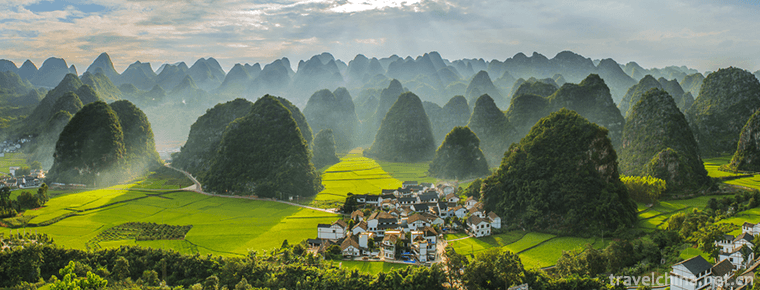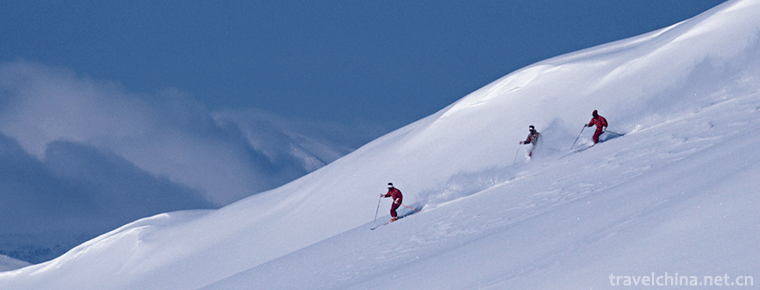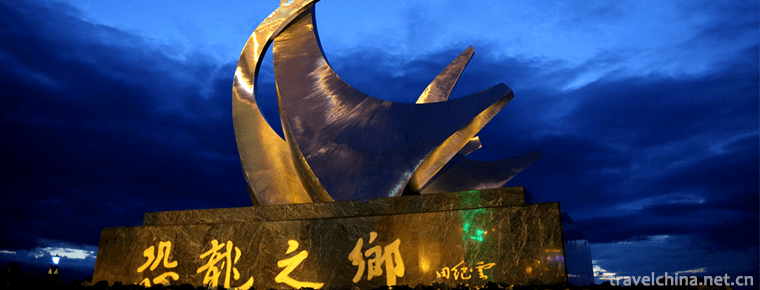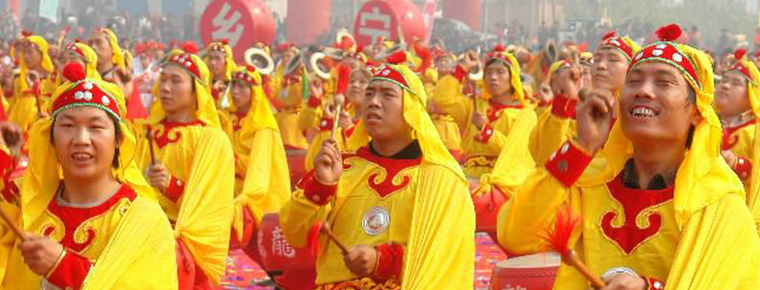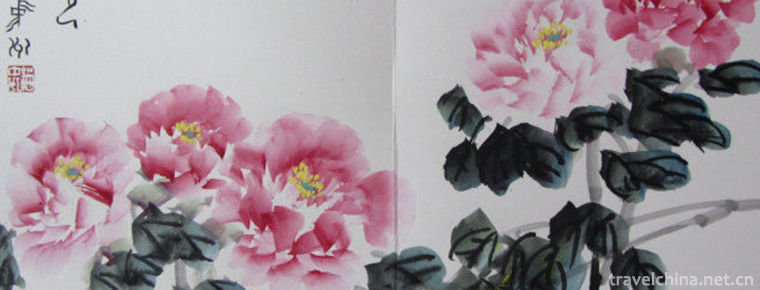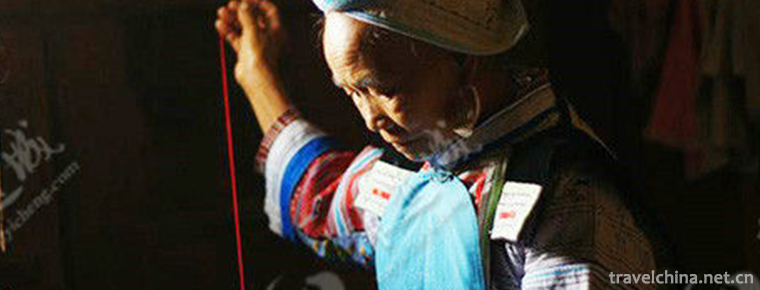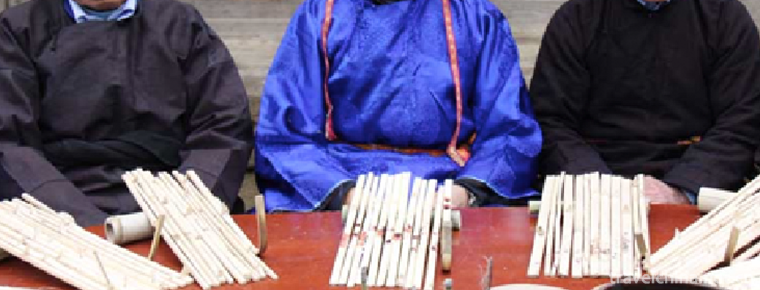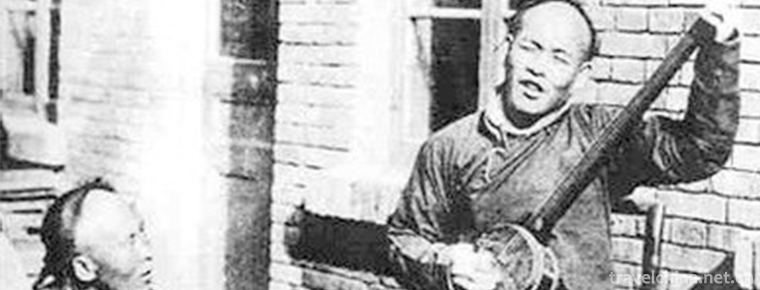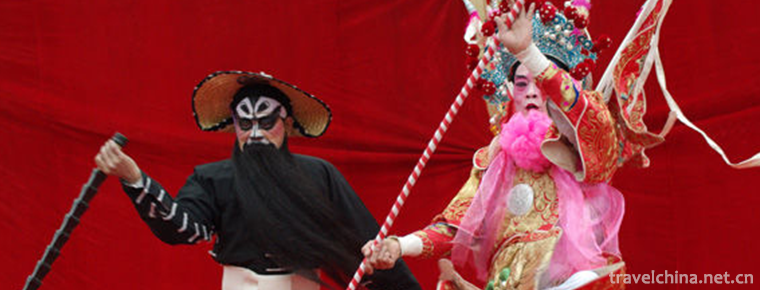Three Gorges Household Scenic Area
Three Gorges Household Scenic Area, National AAAAA Class Tourist Area, the First Batch of Civilized Scenic Area in Hubei Province, Top Ten Scenic Spots in Hubei Province, Demonstration Base for Ecological Civilization Construction in Hubei Province, and Advanced Units Opened to the Outside World in Hubei Province.
The Three Gorges Family is located in the most fantastic and magnificent Xiling Gorge of the Three Gorges of the Yangtze River. Between the Three Gorges Dam and Gezhouba Dam, it spans both sides of the beautiful Dengying Gorge, covering an area of 14 square kilometers.
Three Gorges family, by the mountains and rivers, picturesque style: the traditional Three Gorges foot-suspension building is dotted between the mountains and rivers, long-lost ancient sailing boats, Wupeng boats are quietly moored in front of the Three Gorges family, girls by the stream are wielding sticks and mallets to wash clothes, and leisurely fishermen on the river are scattering nets and fishing... Various customs and customs that have been circulating for thousands of years reflect the simple hospitality of the people of the Xiajiang River.
The magnificent Yangtze River nurtures the Three Gorges culture, where Bachu culture blends, multiplies and develops. When broad and mysterious ties, brilliant and thick marriage, the Three Gorges family is destined to be the legend of the Three Gorges tourism.
geographical environment
The Three Gorges family is located in the most fantastic and magnificent Xiling Gorge of the Three Gorges of the Yangtze River. Between the Three Gorges Dam and Gezhouba Dam, it spans both sides of the beautiful Dengying Gorge, covering an area of 14 square kilometers. Three Gorges family, by the mountains and rivers, picturesque style.
The Three Gorges are magnificent and beautiful. When the world-renowned Three Gorges Dam is completed, the water level in the dam area will rise by 175 meters. In the past, the magnificent scenery of the Three Gorges of the Yangtze River will be greatly improved. Only the Lantern Shadow Gorge between the two dams maintains the authentic Canyon scenery.
natural resources
Shi Ling brand
According to the Record of Donghu County, there are huge stones in the south of the Yangtze River, which are about sixty or seventy feet across, such as rafts, so they are called stone tokens and hence stone place names. The stone token is 32 meters high, 12 meters wide at the top, 13 meters wide at the bottom, 4 meters thick and weighs more than 4300 tons. It is magnificent and magnificent from a distance. In the later Zhou Dynasty of the Five Dynasties, Xiazhou Prefecture was once established in Shipai. In Jianyan of the Southern Song Dynasty (1127-1130 A.D.), Yiling County of Xiazhou moved to Shibishan and Shaoxing recovered for five years (1135 A.D.) and established Shipai for six or seven years.
Dengshi stone
Four marvelous stones on the top of Wuli Mountain resemble the image of Tang monks and apprentices taking sutras from the West in Journey to the West. Whenever the sunset shines and the sunset sets set against the top of the peak, they can be seen from afar, as if they were the figures on the screen of lanterns and shadows. They are vivid and vivid, hence the name "Lantern Shadow Stone". When Mr. Guo Moruo visited the Dengying gorge, he once wrote a poem: "the monk of the Tang Dynasty is the head of the mountain, and the shadow is the pig and the monkey."
The most famous lampstone is Sha Monk Stone, which is known as "the first stone of the Yangtze River in ten thousand miles". It stands on the top of the cliff, mushroom-shaped, weighing more than 100 tons, the bottom of the load-bearing section is only 200 square centimeters, carrying an average weight of nearly half a ton per square centimeter, can be called a world wonder.
Mingyue Bay
When the Haohao Yangtze River rushed to the Shipai reach, it made a sharp left turn of 110 degrees and turned eastward, forming a huge crescent shape, which is called the First Bay of the Three Gorges of the Yangtze River.
The boat crosses Mingyue Bay, sits on the cruise ship and looks over the river in the distance. It will be found that the continuous hills on both sides of the river seem to block the rolling Yangtze River, but the boat enters and retreats into the mountains, and the road turns around peaks and turns suddenly and opens up. Therefore, when Mr. Guo Moruo crossed the Shipai overlooking the First Bay, he expressed the sigh of "there is no way out in the mountain, there is no other day in the Bay".
Dengying cave
The Lantern Shadow Cave is deep and narrow with a length of about 1500 meters. The karst landform in the cave is peculiar and the topography of the cave is changeable. The "Five-color Qiyin Stone" in the cave is the most wonderful landscape of the Lantern Shadow Cave. It is rich in color and interwoven with black, white, yellow, grey and green. The color boundary is clear. It can hear the sound of gongs and drums when it is struck by hand. It is amazing. There is an underground river with a drop of up to 30 meters in the cave. The water flows slowly and silently, or in the shape of a flood bell or a ripple. Ears, or the sound of piano, walking in this dreamlike underground world, fascinating.
Toad spring
At the foot of Fanzi Mountain on the South Bank of Dengying Gorge, there was a big stone standing suddenly, like a clam with open mouth and open eyes. Behind it, a spring is flowing all the year round, and the water is delicious. It is a good source of water for cooking tea and wine. This is the famous clam spring. "Tea Saint" Lu Yu in Tang Dynasty was known as "the fourth spring in the world", and Lu You also praised it as "the fourth spring in the world". In addition to Erlu, Su Zhi, Huang Tingjian, Wang Shizhen and Zhang Zhidong all left poems and essays on Yongquan.
Yang Jia Xi
Yang Jiaxi was named after the descendants of the Yang generals of the Song Dynasty who emigrated there. Mysterious Yangjiaxi drifting takes military drifting as its theme and is full of strong military training color. It is divided into dynamic drifting and static drifting. Here drifting, tourists ride military cars, wear military uniforms, sing military songs, kayak, like water military training, all the way to the rapids, across the dangerous beach, you can not only appreciate the excitement of surfing and rushing the beach, but also feel the leisure of boating in Pinghu Lake.
Main attractions
Water family
Watermen are at the junction of Longjin River and Yangtze River. Several ancient sailing boats stand up against the wind. Small fishing boats scatter fishing nets. The Pavilion in the first gorge is exquisite and unique. On the other side of the stream, a dam has been built to intercept the quiet Longxi River, raising the river by 1-2 meters. The river is green, the trees are verdant, and the mottled Longxi Bridge crosses it. Several small fishing boats moored quietly under the bridge. "Spring waves are green under the Longxi Bridge, and the shocks are shining like a dream, which is fascinating and intly intoxicating."
From generation to generation, people living in the Xiajiang River have formed a unique way of living and working habits with the persistence of relying on mountains to eat mountains and water to eat water. Among them, the most distinctive one is the fisherman's home.
Many people in the Three Gorges have lived on boats for generations. They live on fishing all the year round. They move on the water and fight against the wind and waves. They are accompanied by fishing boats, thus forming a "water family".
Today, although fishermen's lives have improved, this ancient custom has been preserved for a long time. The younger generation still cast nets to catch fish, and the old fishing culture continues in the wind and rain.
Three Gorges people "carry two dams on one shoulder and two streams on one river". Stones, waterfalls, caves and springs are here... A variety of landscape elements are ingeniously combined. The mountains have great banks of mountains, the water is soft and beautiful, the caves have magic caves, the waterfalls have magnificent waterfalls, and the rocks have stone temperament.
The ultimate nature of nature, there is the beauty of floods and desolation, there is the beauty of desolation, there is the beauty of tenderness, here is more powerful beauty.
White wall Qingwa stone slab road, small bridge water suspension tower, withered vine old tree magpie nest, machine gun fortress old trench, Qishi karst cave ancient castle, in the moment you enter the scenic area, your heart will be destined to stay here for a long time, the whole scenic area is filled with fairyland-like dream scenery, the beauty here is palpitating, the beauty here is suffocating!
Stream side family
The people near the stream, half landed and half entered the water, surrounded by mountains, accompanied by green hills, green waters, sunset grass trees, mist and mist, like pictures.
Garlic, grain, chili pepper, castor-coat and hat hang from the hanging-feet building. Smoke curled from the roof, ducks and geese frolicked in the stream in front of the door, and the dog "Wang Wang" barked downstairs from the hanging feet, as if to say "Welcome". On the big stone in front of the hanging-feet building, several mountain girls were beating and washing clothes, singing enthusiastic love songs, banging sticks on the slate, making a crisp and melodious sound, as if playing a love song.
Mountain family
The "hanging-feet building" of the people on the hill is called "balustrade architecture" by modern architects. The Xiajiang area is a steep terrain, with many houses built by the people of the Three Gorges according to the mountain situation, wooden structure, bamboo forests and bananas clustered in front of and behind the houses.
When encountering high ridges, it is necessary to erect columns or build walls in order to run into the eaves of the main house, so it is called "suspension tower".
Its unique features are low front and high back, with corridors on the side and balconies on the back, commonly known as the "turning tower on horseback".
Generally divided into two or three layers, upper layer ventilation, dry, moistureproof, * is the living room, the lower layer is pig cowshed ring or stacked debris, but also to prevent the attack of poisonous snake and beast.
The suspension building is large or small. Generally speaking, it is a four-row fan, three-room, or six-row fan, five-room, while the big family has seven pillars, four-horse courtyard. There is a winding corridor in the suspension building, and the winding corridor is also equipped with railings.
Because of the dangerous terrain of Linjiang River, a family's house often has three or four levels, like steps.
Step into the mountain house, a few steps, you will be introduced to a primitive simple house, into the house, through a door, another step to lead you into another room, as if hide-and-seek, the corridor is tortuous, hide-and-seek, outsiders can enter, but it is difficult to walk out.
Walking in these old houses, one can appreciate the Xiajiang people's individuality of conforming to nature, constantly struggling with nature, persistently creating life and desperately enjoying life.
And the roof coverings, there are also a lot of exquisite, there are mud tiles, there are thatched grass, slate and green tiles, they have their own preferences, also have their own views.
People who build mud tiles will say "loess on the house, family are happy"; people who build grass will say "bacon incense in the thatched house"; people who build slate will say "beneath the slate is blessed".
But it all reflects the optimism, fun and love of life of the people of the Xiajiang River.
Walking up to the hanging-feet tower, the cornices are high, the winding corridors are winding, looking around, the scenery is picturesque, and there are many poems and paintings of the castles in the air. There are poems and exclamations: "Wonderful mountains, beautiful waters, wonderful balls, people on the mountains are beautiful. Hanging foot upstairs for a night, ten years of dreaming is also romantic.
Shipai Memorial Hall of Anti-Japanese War
In May 1943, in order to defend Chongqing, the capital of Chongqing, 150,000 Chinese troops fought with 100,000 Japanese invaders around Shipai. They won a brilliant victory known as "China's Stalingrad Defence War", shattered the Japanese invaders'dream of coveting Chongqing and successfully blocked the Japanese invaders' iron hooves in the southwest of China. This war was a famous battle in China's anti-Japanese battlefield during World War II.
Shipai Anti-Japanese War Memorial Hall is the first comprehensive anti-Japanese War Memorial Hall in the Three Gorges area. It was built on the military site of the Anti-Japanese War in that year. Its area is 440 square meters. It consists of four parts: Memorial hall, multimedia exhibition hall, graphic exhibition hall and Exhibition hall. It collects more than 200 precious objects and nearly 100 precious pictures. In March 2003, the Yichang Municipal People's Government named the Shipai Memorial Hall as the first national defense education base. ,
Human resources
Three Gorges family, by the mountains and rivers, picturesque style: the traditional Three Gorges foot-suspension building is dotted between the mountains and rivers, long-lost ancient sailing boats, Wupeng boats are quietly moored in front of the Three Gorges family, girls by the stream are wielding sticks and mallets to wash clothes, and leisurely fishermen on the river are scattering nets and fishing... Various customs and customs that have been circulating for thousands of years reflect the simple hospitality of the people of the Xiajiang River.
Entering the Xiajiang Diaojiao Tower, Xiajiang girls are singing and dancing, and the red embroidery balls in their hands are floating down. At this time, the beautiful girls of the Three Gorges hold a cup of Xiazhou tea for you, you will feel like a dream, cordial and happy.
The beauty of the stone cards of the Three Gorges family lies in "Wan Urgent, Shiqi, Gu You, Dong Ju, Quan Gan". It includes Longjin River, the Fourth Spring in the World, Yepo Ling, Lantern Shadow Cave, Anti-Japanese War Memorial Hall, Shipai Ancient Town, Yangjiaxi Military Drifting and other scenic spots.
Its tourism connotation can be summarized by "1234". That is, one museum (Shipai Memorial Hall of Anti-Japanese War), two special projects (Three Gorges Family Customs Project and Yangjiaxi Military Drifting Project), and three first projects (Three Gorges First Bay - Mingyue Bay, China First God - Shitoken, Yangtze River First Stone - Lantern Shadow Stone). The fourth spring in the world is the clam spring.
Among them, the Three Gorges family amorous feelings project is divided into water family, stream family, mountain family and today's family. From ancient times to modern times, scholars and poets of all dynasties have written many beautiful poems, such as Li Bai in Tang Dynasty, Ouyang Xiu in Northern Song Dynasty, Su Zhi, Huang Tingjian, Lu You in Southern Song Dynasty, Zhang Zhidong in Qing Dynasty, Guo Moruo, a great modern poet and so on. Poets use their spiritual pens to write about the Three Gorges family, the sound of sails and shadows, clams and springs, mountains and waterfalls, or beautiful peaks and rocks. Reading these poems, I felt as if I was in the scene, and had a full view of the magical scenery and rich customs of the Three Gorges people's stone tablets.
Three Gorges people integrate the essence of Three Gorges culture, Bafeng Chuyun, the past and present of the Xiajiang River. The magnificent Yangtze River nurtures the Three Gorges culture, which is the essence of Bachu traditional art. Bachu culture blends, multiplies and develops here. When broad and mysterious ties, brilliant and thick marriage, the Three Gorges family is destined to be the legend of the Three Gorges tourism.
Tourism information
traffic
Self-driving travelling:
Wuhan tourists can drive by themselves through the exit of the Night Pearl Expressway and the Sanyou Cave along the Yilian (Tuo) Highway to the Three Gorges Home Scenic Spot (along which there are striking traffic signs).
Route: 30KM from Yichang City to Three Gorges Household Scenic Area; 32KM from Yichang Railway Station to Three Gorges Household Scenic Area; 43Km from Three Gorges Airport to Three Gorges Household Scenic Area; 35KM from Yichang Port to Three Gorges Household Scenic Area.
Public transport:
Take bus No. 4 to "Tea City or 22 Company Station of the Three Gorges" in Yichang City. There is a special bus from Yiling Passenger Station to Three Gorges Home Scenic Spot. It runs from 7:00 to 17:00 every hour. The 10-1 Bus Tourist Line from Yichang to the Three Gorges Family will be officially restored to operation on May 29, with a fare of 6 yuan. The starting point of this special line is located in Yiling Square, and the terminal is located in the Three Gorges family. The first time is 6:20, the last time is 18:00, the average interval time of each shift is about 45 minutes, and the fare of the whole journey is 6 yuan (10 yuan for air-conditioned vehicles), which is charged by stages.
Special snacks
There is a kind of potato called goat taro in the scenic spot of the Three Gorges family. Many local farmers will stir-fry it in a dry pan with some chili noodles and onions, which is very tasty. There are also fried Diao Zi Fish and a kind of farm dish called "mixed residue".
Shan Zhen
In the Three Gorges scenic area, game has been eliminated to protect the environment. However, people and livestock in the Xiajiang River are kept in the wild, and many dishes are green and pollution-free food. For example, in the Three Gorges scenic spot, there are many goats farmed by mountain people. There is a dish called mutton grille. This dish has its own characteristics: it must be steamed in place, and it can only eat the first meal. If it is left for the second meal, it will lose its delicious taste.
In addition, the Three Gorges scenic area abounds in citrus, and there are many dishes made from oranges, such as orange peel beef, orange peel fish, orange peel fin, pomelo meat, orange juice fish fillets, etc. The orange peel has the functions of regulating qi and helping digestion. The dishes made are not only refreshing, but also beneficial to health.
Freshwater fish
The Three Gorges Family Scenic Spot is situated on the riverside, and river food is the main feature of its dishes. Fish and vegetable have long fragrance, tender meat and high nutritional value. The trace elements such as selenium, zinc and iron in wild fish of the Yangtze River are much higher than those in common fish. Moreover, wild fish are rich in DHA, known as "brain gold", which can enhance people's memory and thinking, improve body immunity and anti-virus ability.
Fish species commonly used in cooking include river clump, River eel, Chinese sturgeon, catfish, yellow chilli, watermelon and so on. Jiangtuan, very tender, no scales, used for steaming or making soup, are excellent delicacies; the scales of watermelon are soft, do not scrape scales when cooking, automatically fall off when the heat is seen, the meat is tender, but the spines are very thin, many, this kind of fish will die as soon as it leaves the Yangtze River; and Chinese sturgeon, this kind of fish can definitely be called human beings. Old ancestors, after hundreds of millions of years of evolution, meat is very texture, but cooking is limited to artificial reproduction; peach blossom fish, a mollusk, is about 100 million years of history, like jellyfish in the sea, this fish generally makes soup, very fresh, people image it as peach blossom jellyfish, because peach blossom jellyfish. When flowers blossom, the fish also reflects the same color.
Sugar in sugar
Corn is commonly known as bract valley. Bracteal sugar is commonly known as lollipop.
The main ingredients are bract, malt, sesame, walnut, peanut, jujube and ginger. When making, first crush the bract grain, then boil the bract grain powder, put down the malt, let it dissolve, and then filter. The filtered water is boiled into pulp, put into sesame, jujube and other ingredients, and then become sugars. Pull the candy on the board, pull it with a stick, and then whiten it.
Bracteal sugar is a pure natural green plant food. Malt has the function of appetizing, invigorating the spleen and helping digestion. It is refined in coarse grains, sweet in the mouth, pure in flavor and suitable for young and old. It is popular among the people in the Three Gorges area.
Wedding performance
Longjin Xiajiang Marriage Custom Show: This show shows the whole process of Xiajiang people's marriage.
First, the opening Gong and drum, the host appeared, then the bride cared about the face smear, called robbing the groom, and then the bride crying marriage, sedan chair, sedan chair, worship, into the cave and other procedures.
The whole performance will make you laugh.
Ticket information
1. The admission fee for the Three Gorges Household Scenic Spot is 180 yuan/person/time (including the cost of river-crossing ferry), Yangjiaxi drifting ticket is 180 yuan/person/time, Mandarin tour guide service fee is 100 yuan/day, and foreign language tour guide service fee is 200 yuan/day.
2. The scenic spot has a cable car directly to the top of the mountain, and the fare of one-way cableway is 30 yuan per person; the scenic spot needs to cross the river by ferry, and the round-trip ferry ticket is 30 yuan per person.
3. Upstream passengers aged 70 are exempted from admission fees, but they need to buy 30 yuan for ferry tickets and 30 yuan for one-way ropeway tickets to and from Hujintan Wharf.
Visitors between the ages of 4, 60 and 70 buy half-price tickets 75 yuan per person per time, but they need to buy ferry tickets 30 yuan per person to and from Hujintan Wharf.
5. Student tourists buy 75 yuan/person/time half-price tickets on the basis of student certificates, but they need to buy 30 yuan/person ferry tickets to and from Hujintan Wharf.
6. Visitors with disabilities are free of tickets.
7. Visitors to servicemen are exempted from admission tickets by means of their officer's certificates.
Historical culture
Scholars and poets of past dynasties left behind many beautiful poems and essays.
Such as Li Bai's "spring water moon gorge", Ou Yangxiu's "sail on the river, the moon gorge", Lu You's "the first gorge in the Badong gorge, the fourth springs in the world's spring", and the "Tang Seng's younger brother, the head of the Tang Dynasty monk", the "Dengying Lian pig and monkey" of the modern poet Guo Moruo, and the Three Gorges of the marshal of the marshal Chen Yi, who are sailing on a boat, and the Three Gorges of Xiling. Forget to return to prosperity, still dense ", and so on.
After reading these poems, I felt like I was in the scene and had a good look at the scenic spots of Dengying Gorge.
Three Gorges people integrate the essence of Three Gorges culture, Bafeng Chuyun, the present and past of the Xiajiang River.
Honors
In 2010, the Three Gorges Family Scenic Spot was awarded the title of "China's most internationally influential tourist destination" by the Asia-Pacific Tourism Organization, and the first batch of "civilized scenic spots", "Ten Best Scenic Spots in Hubei Province", "Demonstration Base for Ecological Civilization Construction in Hubei Province" and "Hubei Province Opening to the Outside World" by the Hubei Provincial Party Committee and the Provincial government. Put the title of "Advanced Unit" and so on.
In 2011, the Three Gorges Family Scenic Spot was recognized as a national 5A class tourist attraction by the National Tourism Landscape Quality Assessment Committee.




















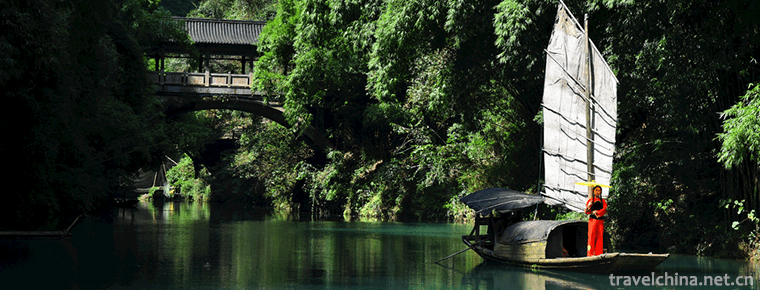
-
Three Gorges Household Scenic Area
Three Gorges Household Scenic Area, National AAAAA Class Tourist Area, the First Batch of Civilized Scenic Area in Hubei Province, Top Ten Scenic Spots in Hubei Province.
Views: 142 Time 2018-12-12 -
Wanfeng Forest Scenic Area
Wanfeng Forest Scenic Area, located in the southeast of Xingyi City, Guizhou Province, is the largest and most typical karst peak forest in China, with its magnificent momentum, peculiar shape and bea.
Views: 164 Time 2018-12-17 -
Anbang River National Wetland Park
Anbang River National Wetland Park is built on the basis of Anbang River Provincial Wetland Nature Reserve, which is located in Shuangyashan City, Heilongjiang Province.
Views: 130 Time 2019-01-02 -
Gongchangling Hot Spring Skiing Ground
Gongchangling Skiing Ground is located in Tanghe Scenic Area of Gongchangling, Liaoyang City, Liaoning Province. It covers an area of 100 hectares and is a national AAA-class tourist attraction..
Views: 109 Time 2019-01-12 -
Jiayin Dinosaur National Geopark
Jiayin Dinosaur National Geopark, the first place where dinosaur fossils occurred in China, is named for the dragon. The fossils unearthed here have been packed into 10 dinosaur skeletons..
Views: 97 Time 2019-01-21 -
Auspicious gongs and drums in southern Shanxi
Weifeng gongs and drums in southern Shanxi are folk traditional percussion music which was born and popular in Linfen area of Shanxi Province. The first batch of them were selected into.
Views: 132 Time 2019-05-07 -
Hakka ancient prose
As early as the late Ming Dynasty and early Qing Dynasty, Hakka ancient prose had been formed, mainly distributed in Gongjiang Town, Xinpi Township, Kuanta Township, Zishan Town, .
Views: 157 Time 2019-05-09 -
Luoyang Peony Festival
The Chinese Luoyang Peony Culture Festival, formerly known as the Luoyang Peony Flower Festival, has been selected into the national intangible cultural heritage list since 1983. In November 2010, it .
Views: 108 Time 2019-05-15 -
Miao embroidery
Miao embroidery refers to the embroidery skills inherited by the Miao people in China. Miao embroidery in Leishan County, Guiyang City and Jianhe County of Guizhou Province has different forms and sty.
Views: 138 Time 2019-06-05 -
Miao Jia Li
Jiali, Miao is called "jaxlil". In the context of Miao language, "Jiali" is a synthesis of the semantics of "philosophy", "truth", "reason" and ".
Views: 160 Time 2019-06-05 -
Ningxia Xiaoqu
Ningxia Xiaoqu, a national intangible cultural heritage project, is a traditional rap art form with strong local characteristics..
Views: 220 Time 2019-06-08 -
Guangxi drama
One of the local operas of the Zhuang nationality in Guangxi. Yongju Opera belongs to the Pihuang Vocal Tune System, which originated in Hunan. It was formerly called Guangju Opera, Old Opera, Local O.
Views: 166 Time 2019-07-14
